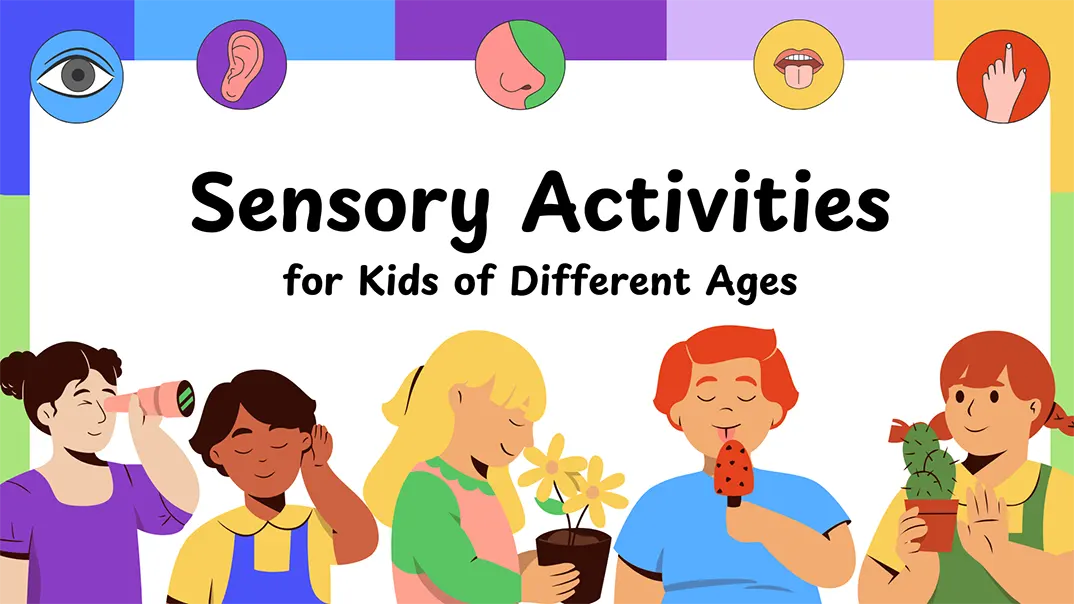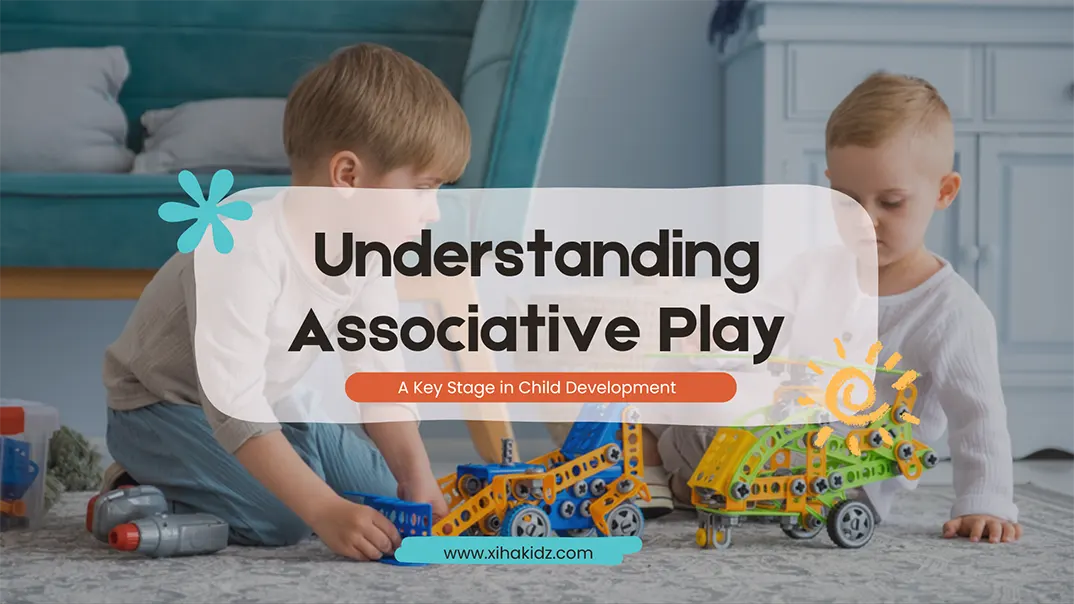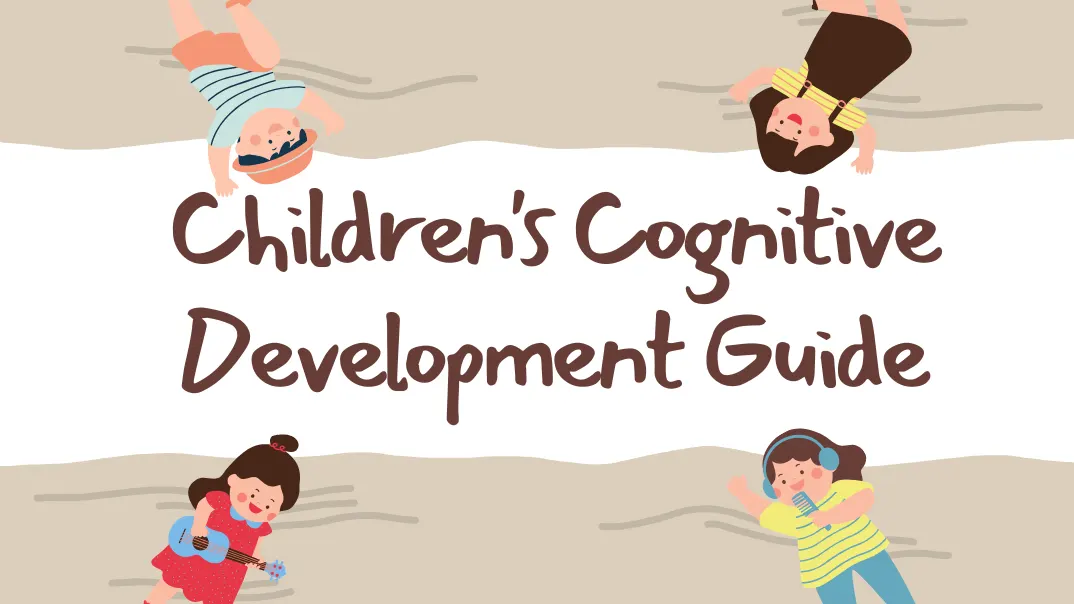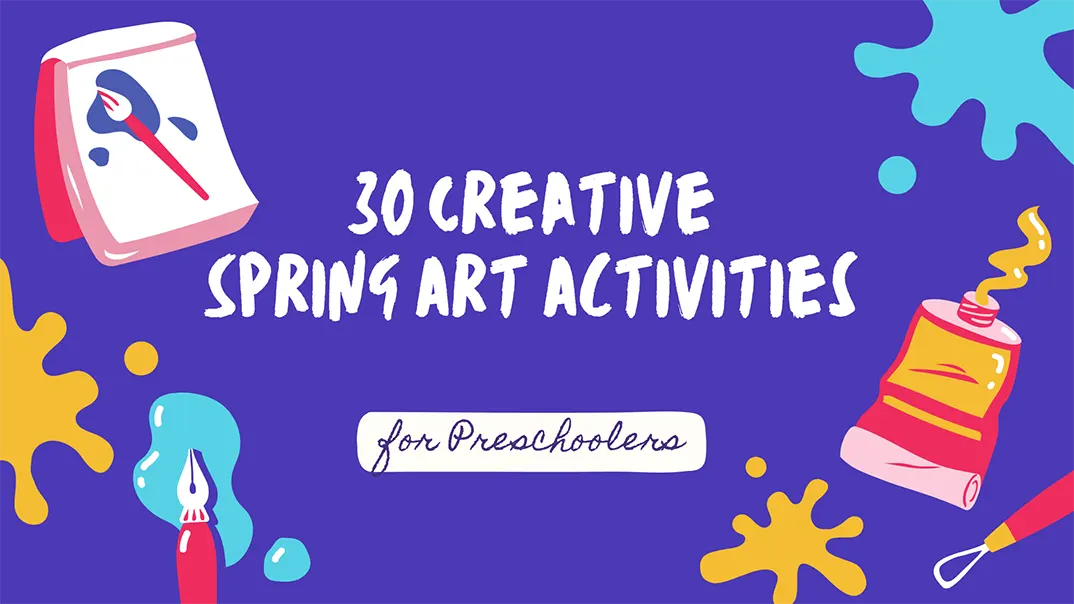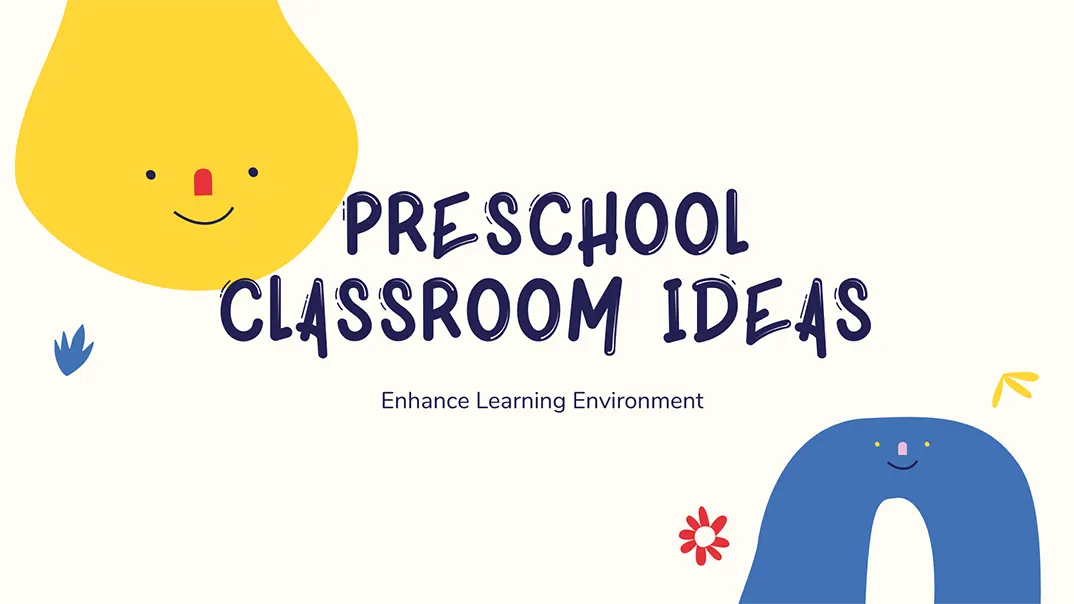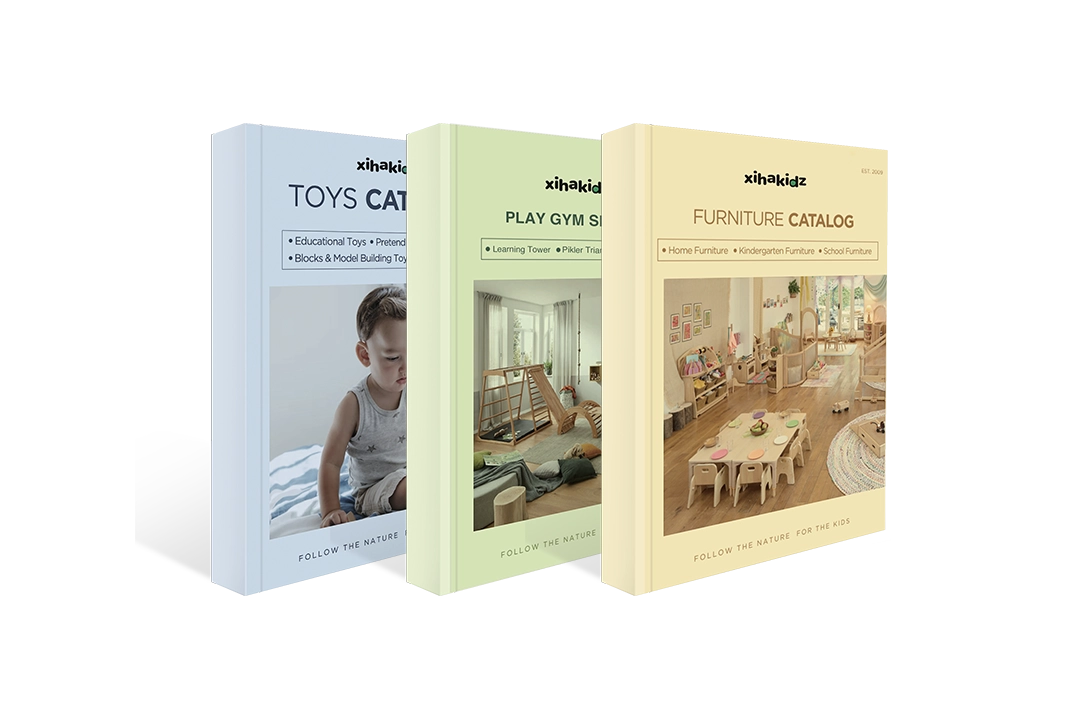Have you ever wondered how sensory play can shape a child’s cognitive and emotional growth? Are you seeking ways to engage your child in fun yet educational activities? Whether you’re a parent, caregiver, or educator, incorporating sensory play can enhance a child’s learning experience and provide numerous developmental benefits.
Sensory activities are not just about fun; they play an essential role in a child’s development. These activities help children enhance their fine motor skills, boost creativity, and even calm their minds. Sensory play helps kids engage with the world around them and build various skills, from language to cognitive development. Whether your child is a toddler or a teenager, sensory activities are an excellent way to nurture their growth.
Sensory play is a great way to foster growth in children of various ages, from infants just starting to explore their senses to preschoolers developing fine motor skills and creativity. Read on for practical advice on sensory activities that engage children of various ages.
Why Is Sensory Play Important?
What Is Sensory Play?
Sensory play is any activity that stimulates a child’s senses—sight, sound, touch, taste, and smell. It encourages exploration and learning through hands-on, interactive experiences. For example, playing with sand, water, playdough, textured materials, or musical instruments can provide sensory stimulation.
In the early years, sensory play is essential for brain development as it helps children build cognitive, motor, and language skills. It can also promote problem-solving, creativity, and emotional regulation by allowing children to explore different textures, temperatures, and sensations in a controlled environment.
Activities like finger painting, sensory bins, or playing with different materials (like rice, fabric, or foam) are great examples of sensory play that encourage children to engage in a multi-sensory experience.
Benefits of Sensory Play
- Cognitive Development: Engaging in sensory activities allows children to develop problem-solving, language, and memory skills. It promotes exploration and experimentation, leading to a better understanding of their environment.
- Motor Skills: Sensory play involves activities that require physical action, whether it’s grasping, pushing, pulling, or moving. These movements help children develop their fine and gross motor skills.
- Emotional Regulation: Sensory play can provide a calming effect. For children who may experience anxiety or stress, sensory activities like squishing playdough or listening to calming sounds can help regulate emotions.
- Creativity and Imagination: Sensory play allows children to engage in imaginative scenarios. For example, playing with water allows them to explore scientific concepts like cause and effect while encouraging pretend play.
- Language Development: As children describe their sensory experiences, it expands their vocabulary and enhances communication skills.
What to Consider When Planning Sensory Activities for Kids?
Planning sensory activities for kids can be fun and educational, but keeping a few things in mind is important. Here are the key considerations to ensure that the sensory activities you plan are engaging, safe, and developmentally appropriate:

1. Age Appropriateness
Each age group has different developmental needs and abilities. A sensory activity for a toddler may differ from one for a school-aged child. Toddlers might enjoy activities that allow them to touch and manipulate different textures, such as slime or playdough. At the same time, older children may prefer more complex tasks that challenge their problem-solving skills, like building structures or experimenting with water pressure.
2. Safety
Safety should always be a top priority when planning sensory activities. Ensure that materials or tools are non-toxic, safe for children, and pose no choking hazards. For example, using small objects like beads or buttons can be dangerous for young children who may put things in their mouths.
3. Space Requirements
Some sensory activities may require ample space, while others can be done in a small area. Water or sand play may require outdoor or larger indoor spaces, while activities like finger painting or sensory bins can be set up on a table or floor. Consider the classroom environment where the activity will take place and plan accordingly.
4. Mess Factor
Sensory activities can sometimes get messy, so be prepared. Using aprons, old clothes, or setting up on a surface that is easy to clean can help prevent stress about messes. Remember that messes are often part of the fun and provide additional sensory stimulation as kids explore different textures.
5. Child’s Preferences
Every child is unique. Some children love exploring new textures, while others may be more sensitive to certain smells or tactile experiences. It is important to observe the child’s reactions and preferences and ensure the activities align with their sensory needs and interests.
6. Educational Value
Sensory activities can be an excellent learning opportunity. They can help develop fine motor skills, improve cognitive abilities, and foster creativity. For example, pouring, sorting, or manipulating objects can strengthen hand-eye coordination, while experiments with sound and color can improve listening and observation skills.
Entdecken Sie unsere gesamte Produktpalette
Erhalten Sie Zugang zu unserem umfassenden Katalog mit hochwertigen Möbeln und Spielgeräten für Kindergärten und Schulen.
Sensory Activities for Kids of Different Ages
Sensory activities can be adapted to suit various ages and developmental stages. Here are some ideas for sensory play for kids of different ages:
Easy Sensory Activities for Infants (0-1 Year)
Sensory play should focus on engaging infants’ basic senses. At this age, babies are learning to experience the world through touch, sight, and sound.
- Textured Fabrics: Provide soft fabrics like velvet or cotton for babies to feel. Tummy time mats with various textures can also encourage exploration.
- Bright, Contrasting Colors: Babies are more drawn to high-contrast colors. Using black-and-white patterns or brightly colored toys can stimulate their visual senses.
- Sound Exploration: Soft rattles or toys that make gentle sounds can engage a baby’s hearing and help them develop auditory discrimination.


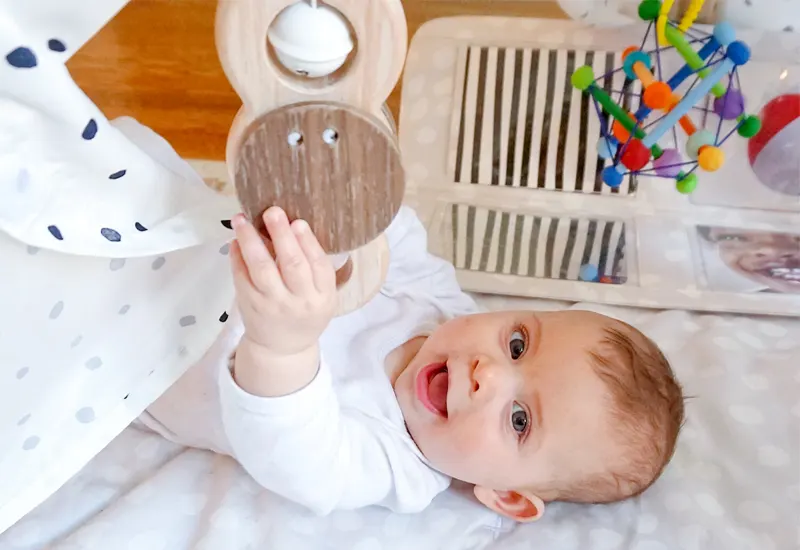
Easy Sensory Activities for Toddlers (1-3 Years)
Toddlers are more active and curious about their surroundings. Sensory activities at this stage should focus on fine and gross motor skills and emotional development.
- Playdough and Slime: Simple tactile experiences like squishing, rolling, or shaping can enhance fine motor skills and creativity.
- Wasser spielen: A sensory bin filled with water, sponges, and plastic toys can provide hours of fun while teaching cause and effect.
- Sound Play: Instruments like tambourines, maracas, or drums allow toddlers to experiment with sounds and rhythm.
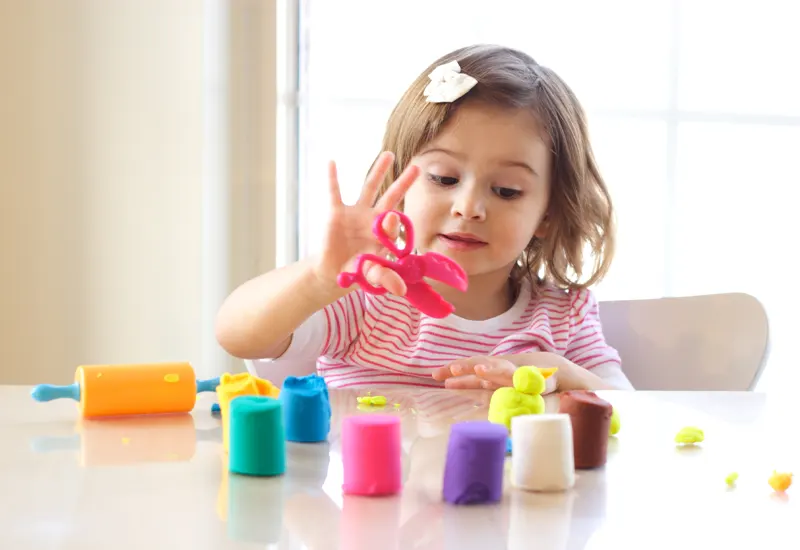


Sensory Activities for Preschoolers (3-5 Years)
Preschoolers are refining their motor skills and becoming more independent. Sensory activities can also help them develop problem-solving abilities and creativity.
- Sensory Bins: Fill bins with rice, beans, or pasta, and hide small objects for the children to find. This helps develop fine motor skills and encourages imaginative play.
- Painting and Sensory Crafting: Non-toxic paints, markers, or chalk for drawing allows for creative expression while providing sensory stimulation.
- Nature Walks: Take a walk in a park or forest, encouraging children to feel the textures of leaves, rocks, and dirt, or listen to the sounds of birds and wind.
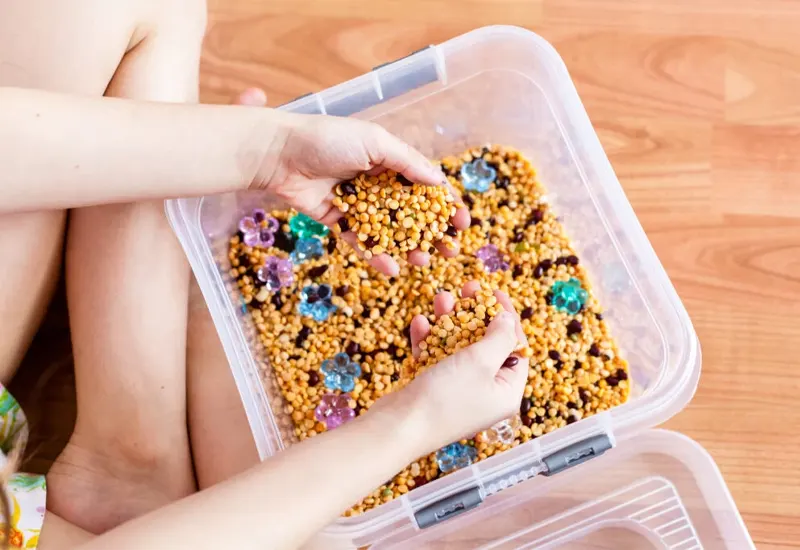

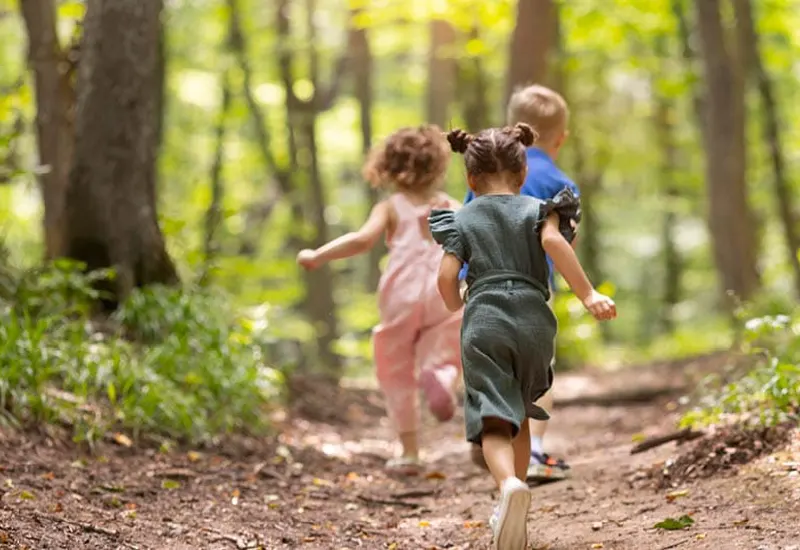
Sensory Activities School-Aged Kids (6+ Years)
As kids grow, they become more capable of understanding the concept of sensory activities and can handle more complex tasks. Activities can become more educational and involve multiple sensory experiences at once.
- Science Experiments: Simple experiments, like mixing baking soda and vinegar or creating a homemade volcano, stimulate the visual and tactile senses while teaching basic scientific principles.
- Cooking and Baking: Involving kids in cooking or baking engages multiple senses—taste, smell, touch, and sight—while improving skills like following instructions and measurements.
- Building Projects: Building blocks or LEGO sets can provide a tactile experience that fosters problem-solving and creativity.

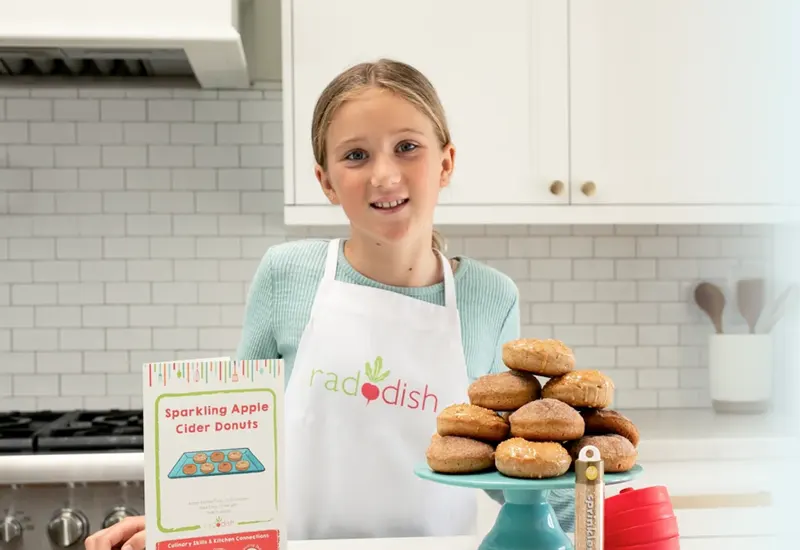
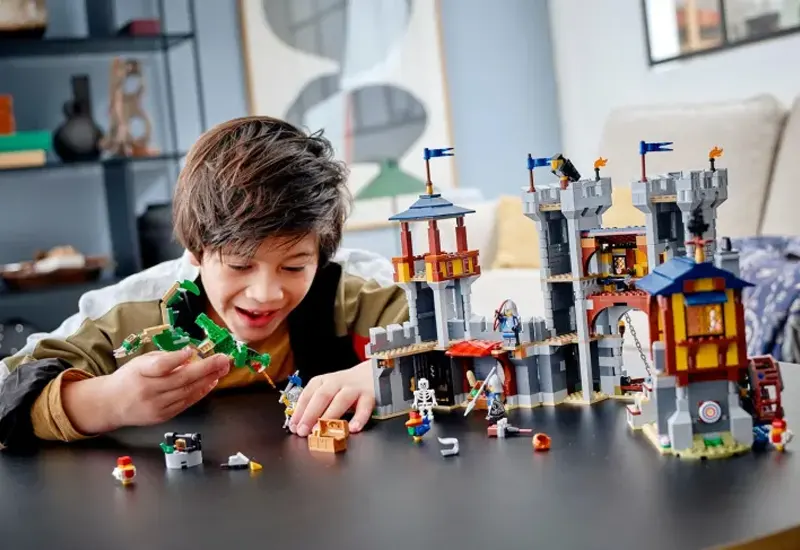
Holiday Sensory Activities
Sensory activities can be a fantastic way to celebrate various holidays, combining festive fun with sensory exploration. Here are some exciting holiday-themed activities to try:
Halloween Sensory Activities
Halloween is a great time for sensory play, with its spooky textures, vibrant colors, and distinctive smells. Here are some Halloween-inspired sensory activities:
- Pumpkin Touch and Feel: Cut open a small pumpkin and let kids explore the insides. The slimy texture of the pumpkin pulp and seeds provides a tactile sensory experience. You can also create a sensory bin filled with fake spiders, plastic eyeballs, or rubber bats.
- Witch’s Potion Sensory Bottles: Fill clear bottles with colored liquids, glitter, and small objects like rubber bugs. Kids can shake and explore the bottles while using their senses of sight and touch.
- Spider Web Sensory Exploration: Stretch white yarn in a room or outdoors to create a “spider web.” Kids can crawl through or carefully navigate it, stimulating their sense of touch and promoting fine motor skills.

Christmas Sensory Activities
Christmas is filled with sensory experiences, from the smells of pine to the sparkle of lights. Here are a few sensory activities to try:
- Snow Painting: Fill spray bottles with water and food coloring to create a colorful “snow paint.” Kids can use the spray to decorate the snow and make beautiful patterns, providing visual and tactile experiences.
- Christmas Tree Smell Exploration: Gather different pine branches or artificial tree parts and let kids smell them. Use other holiday scents like cinnamon sticks or peppermint for additional olfactory stimulation.
- Holiday-themed Sensory Bottles: Fill clear bottles with materials related to Christmas, like fake snow, tiny ornaments, or cinnamon sticks, and let kids explore them by shaking and rolling the bottles.
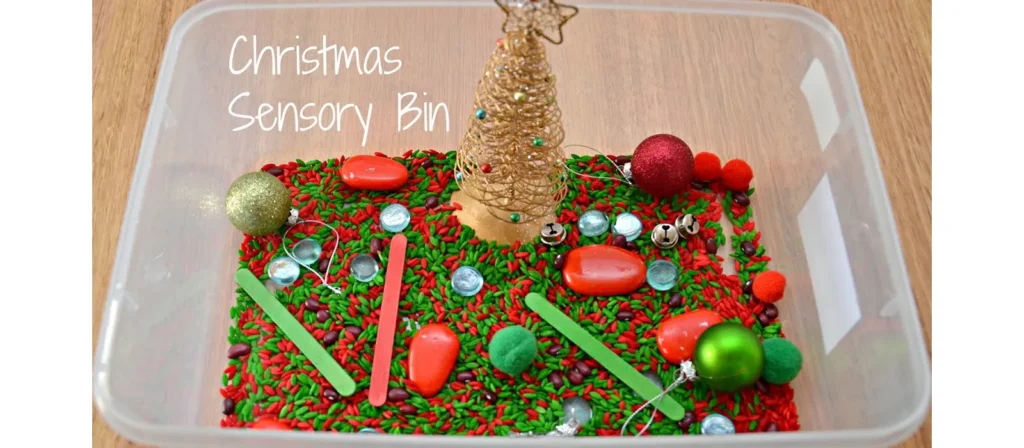
Thanksgiving Sensory Activities
Thanksgiving offers unique sensory experiences related to food, texture, and nature. Here are some ideas to celebrate the holiday:
- Corn Sensory Bin: Create a sensory bin filled with dried corn kernels. Kids can pour, scoop, and play with the corn while refining their fine motor skills.
- Pumpkin Pie Play Dough: Make pumpkin-scented play dough using cinnamon, cloves, and nutmeg. This provides a great tactile sensory experience and lets kids explore textures while creating pretend pies.
- Feather Exploration: Collect colorful or fake feathers and let children explore them with their hands or arrange them in different patterns. Feathers can provide visual, tactile, and auditory sensory stimulation as kids rub them together.

Easter Sensory Activities
Easter brings fun textures and pastel colors, making it an ideal time for sensory activities that help children explore different sensations.
- Easter Egg Sensory Hunt: Fill plastic Easter eggs with various materials such as rice, beans, or sand. Kids can explore each egg’s different sounds and weights as they find them around the house or yard.
- Bunny Ear Sensory Play: Create bunny ears using cotton balls or felt. This allows kids to explore the textures and make fun crafts that stimulate their sense of touch and creativity.
- Egg Dyeing Sensory Exploration: Set up a sensory station with safe, edible dyes while dyeing eggs for Easter. Kids can feel the texture of the dye and use their creativity to color the eggs.
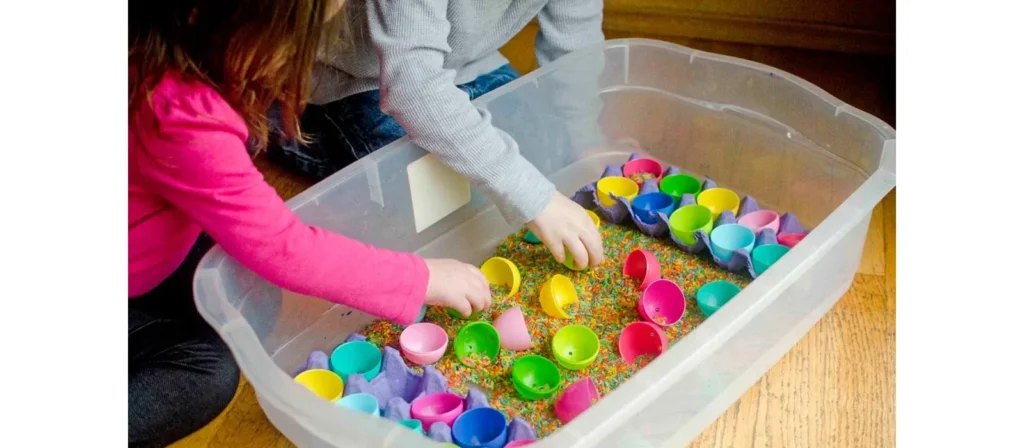
Seasonal Sensory Activities
Seasonal sensory activities take advantage of each season’s unique features. From the warmth of summer to the cold of winter, each season provides an opportunity to engage kids in fun and educational sensory activities.
Spring Sensory Activities
Spring brings an explosion of colors, scents, and textures, making it the perfect time for sensory play that highlights nature’s rejuvenation.
- Flower Petal Sorting: Collect various flowers or petals and have kids sort them by color, size, or texture. This activity stimulates their tactile and visual senses.
- Mud Pie Making: Let kids explore mud by creating mud pies in the yard or a sandbox. This tactile activity engages them with different textures, and the messy play fosters creativity.
- Birdwatching and Nature Sounds: Take children outside to observe birds and listen to their songs. Engage kids by asking them to mimic bird sounds or identify the different birds they see.
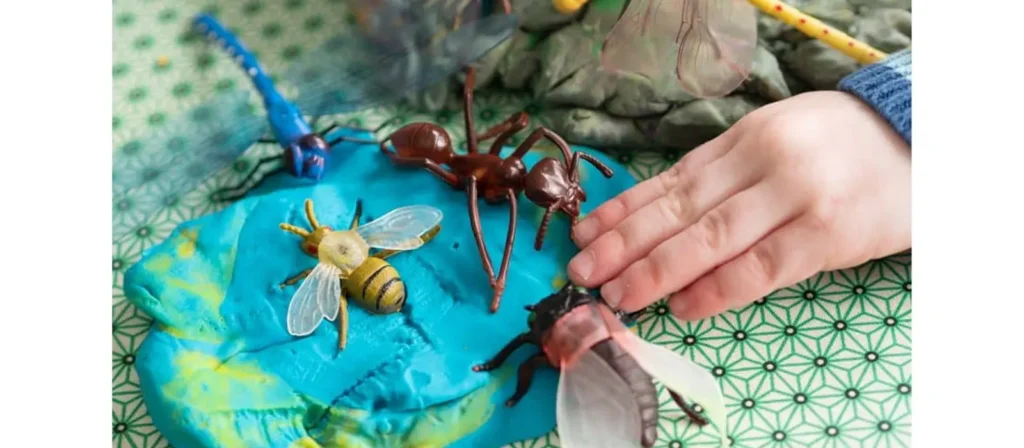
Fall Sensory Activities
Fall is synonymous with crunchy leaves, cool air, and pumpkin spice, making it a fantastic season for sensory exploration.
- Leaf Crunching: Collect various leaves and spread them on the ground. Kids will love walking through the leaves and listening to the crunching sounds. The varied textures also engage their sense of touch.
- Apple Picking and Tasting: Visit an apple orchard, where kids can pick apples and experience the texture, taste, and scent of the fruit. Back home, you can create apple sensory bins or try cooking together.
- Pumpkin Exploration: Fall is the season of pumpkins. Kids can touch, smell, and even carve small pumpkins. The textures of pumpkin skin and the seeds inside offer great sensory stimulation.

Summer Sensory Activities
Summer is filled with outdoor adventures that engage all five senses. From feeling the sun’s warmth to playing in the sand, there’s no shortage of sensory activities for kids to enjoy.
- Wasser spielen: Whether it’s a sprinkler, kiddie pool, or just a bucket of water, it is a sensory-rich experience. Kids can splash, pour, and feel the cool water against their skin.
- Sandcastle Building: Create a sensory station with different types of sand (play sand, beach sand, or colored sand) and let kids build castles, fostering their tactile senses.
- Frozen Sensory Fun: Freeze small toys or objects inside ice cubes or a large block of ice. Kids can use tools like spoons or hammers to “excavate” the objects, stimulating their tactile and problem-solving skills.

Winter Sensory Activities
Winter is a season of contrasts, with cold, snow, and holidays offering various sensory opportunities. Here are some winter-themed sensory activities:
- Snow Sensory Exploration: If you can access snow, create a sensory bin using snow and winter-themed toys. Kids can make snowballs, dig through the snow, or even build sculptures.
- Hot Cocoa Sensory Play: Create a pretend sensory station with hot cocoa, marshmallows, and peppermint sticks. Kids can enjoy the smell and touch of the ingredients while pretending to make and drink the cocoa.
- Ice Painting: Freeze colored water in ice cube trays and use the ice as paintbrushes. Kids can “paint” on large sheets of paper, feeling the ice and watching the colors melt and blend.

Sensory Play Toys
Sensory play toys are an excellent way to support children’s development while offering a fun, engaging experience. These toys stimulate children’s senses of sight, sound, touch, and even smell, fostering growth in cognitive, emotional, and motor skills. Here are some popular sensory play toys that can help:
- Textured Balls: Textured balls are a fantastic option for babies and toddlers. Their different surfaces can help develop a child’s tactile sense as they grasp, roll, or bounce the balls. Some textured balls may even make sounds, providing auditory stimulation.
- Sensory Fidget Toys: Fidget toys such as spinners, squishy toys, and poppers help children with self-regulation, focus, and tactile exploration. These toys provide a calming effect for children who need something to focus on.
- Building Blocks: Different textured blocks made of wood, foam, or soft plastic can engage kids in sensory play, stimulating touch and encouraging creativity as children stack, build, and arrange the pieces in various ways.
- Slime or Playdough Kits: These kits allow kids to squeeze, mold, and manipulate materials to explore various textures. You can easily make homemade slime with non-toxic ingredients, and the squishy, stretchy properties provide a sensory-rich experience.
Verwandeln Sie Ihr Klassenzimmer mit individuellen Möbellösungen
Sensory Playground Equipment
Sensory playground equipment is designed to engage children with different abilities and needs, creating an inclusive environment where every child can enjoy stimulating activities that support sensory exploration. Here are a few examples of sensory playground equipment that enhance tactile, auditory, and visual experiences:
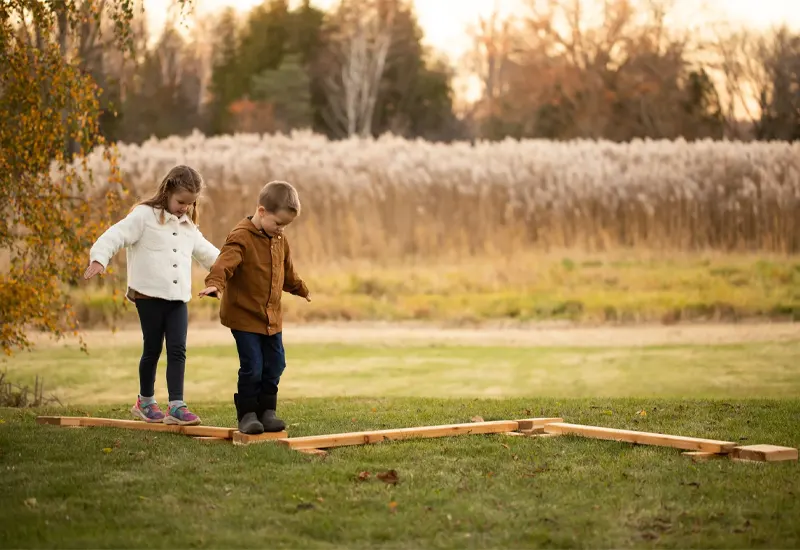
Balance Beams: Low balance beams encourage children to walk along them, engaging their sense of touch as they feel the texture beneath their feet. This also helps with balance, coordination, and motor development.
Musical Instruments: Playground equipment like drums, chimes, or xylophones can stimulate auditory senses. These instruments allow children to create sounds and rhythms, helping to develop listening skills and hand-eye coordination.
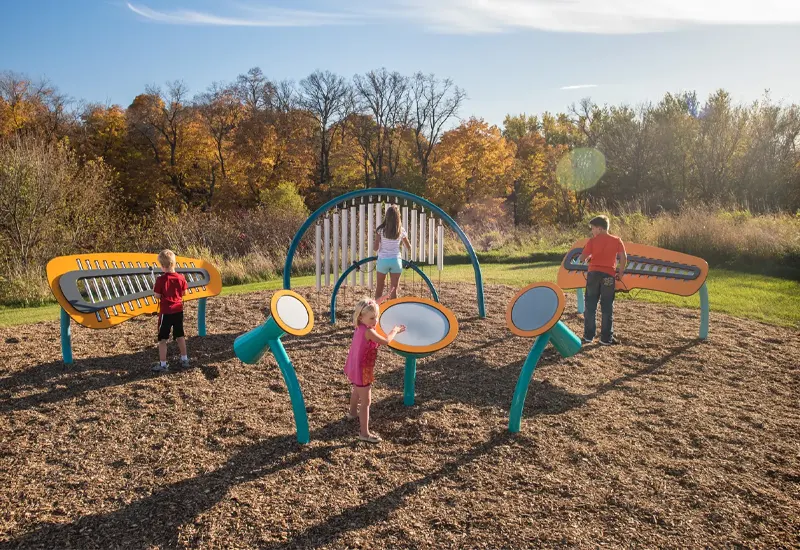
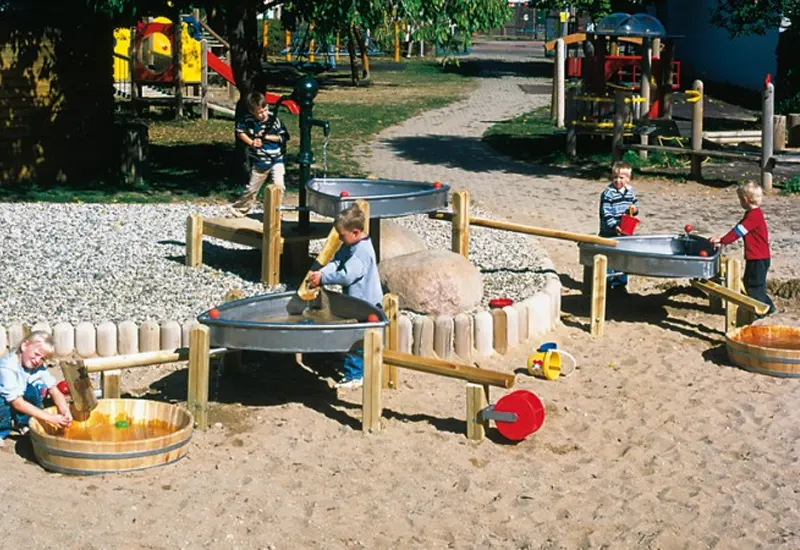
Sand and Water Play Areas: Some playgrounds have designated sand and water play areas where children can scoop, pour, and explore the textures of sand, water, and various materials. These areas allow messy, interactive play to enhance fine motor skills and promote creativity.
Sensory Walls: Sensory walls are interactive, tactile panels that feature buttons, levers, spinners, and textured surfaces. These types of equipment engage a child’s sense of touch and provide stimulating activities that encourage exploration and learning.

Schlussfolgerung
Incorporating sensory activities into a child’s daily routine provides countless benefits, helping them develop motor coordination, problem-solving, and creativity skills. Whether through holiday-themed activities, seasonal play, sensory toys, or specialized playground equipment, sensory experiences foster children’s emotional, cognitive, and physical growth. By considering a child’s age, interests, and sensory needs, parents and educators can create meaningful play opportunities that are both fun and educational. So, explore the wonderful world of sensory play and watch children thrive as they explore, discover, and grow through these engaging activities.
Entdecken Sie unsere gesamte Produktpalette
Erhalten Sie Zugang zu unserem umfassenden Katalog mit hochwertigen Möbeln und Spielgeräten für Kindergärten und Schulen.

